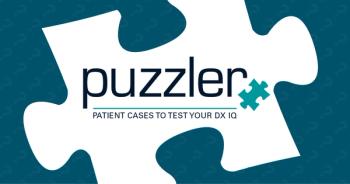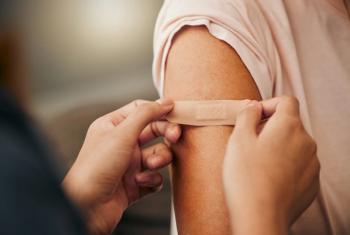
John Loiselle, MD, talks recognizing pediatric musculoskeletal injuries
John Loiselle, MD, shares guidance at AAP 2025 on recognizing pediatric musculoskeletal injuries and when urgent orthopedic referral is needed.
At the American Academy of Pediatrics (AAP) 2025 National Conference and Exhibition, John Loiselle, MD, Chief of Emergency Medicine at the Nemours Children’s Hospital of Delaware, discussed challenges in recognizing musculoskeletal injuries in children and when urgent orthopedic referral is necessary.
Commonly missed injuries in pediatric patients
Loiselle noted that certain injuries are uniquely pediatric and can be overlooked, particularly by clinicians who do not frequently see children. “We often say in trauma that the most commonly missed injury is the second injury, where you focus on that initial injury and forget to continue to look to see if there's additional injuries there at the time,” he said.
He emphasized that the physical exam may sometimes be misleading. For example, a slipped capital femoral epiphysis may present with knee pain, despite the underlying problem being in the hip.
Balancing imaging decisions
The physical exam remains the most important factor in determining whether radiographs or other imaging are needed. Clinical decision tools may also help guide decisions. However, Loiselle pointed to the risks of both under- and over-imaging. Missing a subtle injury, such as a buccal fracture, could cause concern, while unnecessary radiographs may add cost and inconvenience. “There's obviously the additional exposure, although I think that's relatively minimal; it's more the expense of doing that and the inconvenience for the patient and the parent,” he said.
Treating minor injuries in pediatric practice
According to Loiselle, most serious fractures should be managed by orthopedic specialists, particularly in very young children who cannot communicate discomfort from splints or casts. However, pediatricians and pediatric emergency physicians can often treat minor injuries such as sprains or small fractures of the ankle or wrist with removable splints or boots. These allow protection and healing without the need for specialized intervention.
Indications for urgent orthopedic referral
When asked about the clearest signs for referral, Loiselle stressed that acute care physicians often make the initial determination. “Some are very obviously types of injuries that need to be seen acutely by the orthopedic surgeon for treatment,” he said. Infections of the bone or joint, along with neurovascular concerns, require emergency evaluation.
For primary care pediatricians, Loiselle recommended referring such cases directly to the emergency department, where access to immediate orthopedic consultation is available. He also highlighted the importance of maintaining direct communication pathways with orthopedic specialists for complex or uncertain cases.
Disclosure:
Loiselle reports no relevant disclosures.
Reference:
Loiselle J. Top 10 Musculoskeletal Complaints: Recognition and Management. Presentation. Presented at: American Academy of Pediatrics 2025 National Conference & Exhibition. September 26-30, 2025. Denver, Colorado.
Newsletter
Access practical, evidence-based guidance to support better care for our youngest patients. Join our email list for the latest clinical updates.










